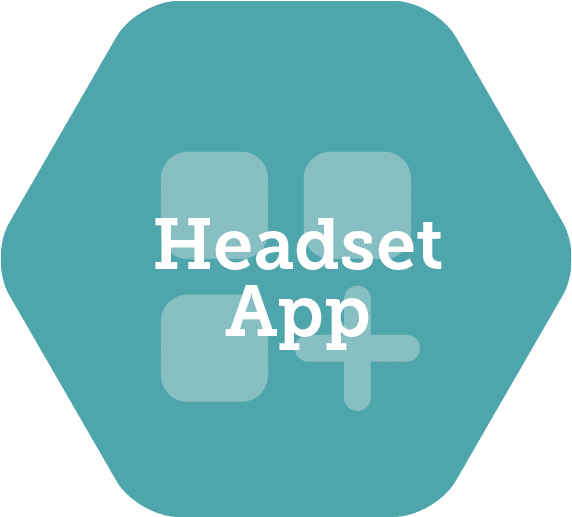Here at Motive, we provide a platform to create VR/AR scenarios. Our focus is to train people for real workplace situations in various industries.
When Half Life: Alyx released in March 2020, it was evident that it stood head and shoulders above any other VR game. After playing it extensively, we decided to dive deep into the core of what made it engaging and asked ourselves if we could translate what we enjoyed most in Alyx to improve our work?
Turns out, quite a lot.
Understanding what works in VR
Learning can occur through many different mediums. From classroom lectures, to reading books or watching videos, there are many possibilities. However, we treat these mediums in different ways. Content directly translated from one to another usually falls flat and VR is no different.
Content for VR needs to be designed by taking into consideration the strengths and weaknesses of the medium.
The problem is that VR is a relatively new and unexplored technology. The interactions and mechanics that are effective inside a virtual environment often requires a lot of testing and feedback to feel great.
This is where Half-Life: Alyx became really useful. Being a detailed game with a multitude of interactions, we use it as a testing ground for how certain interactions feel without having to develop them ourselves. This allows us to spend more time fine tuning interactions for specific use cases, instead of testing several basic mechanics first.
In an earlier blog post, we explain how we train people on the procedure of equipping PPE. In that scenario, the user takes a mask, brings it to their face and the mask gets attached to their face.
Initially we had many doubts about having something attached permanently in your field of vision.
Would it cause motion sickness? Would people find it irritating? Would it feel unrealistic?
Observing how you equip objects to your face and body in Alyx helped us answer some of these questions to create a better experience!
Providing better haptic feedback
In the context of VR, haptic feedback refers to the vibrations a controller makes. It can replicate the experience of touch or provide feedback when an action occurs.
By varying intensity and duration of vibrations we create haptic “effects”. For example, shooting a gun would be a strong and short burst. Using a drill in the wall could be mimicked by transitioning between high and low vibrations.
Alyx uses haptic feedback to its fullest potential and it plays a huge role in how immersed you feel with your environment. This inspired us to build our own suite of many pre-made and customizable effects that we integrate with all our scenarios.
It’s a shame that good haptic feedback often goes unnoticed by a user, but we have found that its impact on their experience is significant.
Creating stress and tension through audio
One of the strengths of VR is the ability to create situations of tension and stress. Some of our scenarios focus on medical situations that train users to deal with high pressure and intense situations.
We took inspiration from how Alyx utilizes sound to create tension. By layering and interweaving environmental sounds, sound effects, directional noises and character voices, it replicates the feeling of tension and chaos within the environment.
The suspension of disbelief
We used to think that for a user to believe something is there, they have to physically be able to see it. This meant that we would have to actually render an object and build mechanics so the user could interact with it.
After playing Half-Life: Alyx, we realized that users often just believe what you tell them. For example, in the game, you pull ammunition out of your “bag”. The player has to reach over their shoulder and press down on the controller to grab. The bag is not actually there! When we played it, no one even questioned its existence. We just all seemed to believe that there we were carrying a backpack with ammo because that’s what the game told us.
Design controls that map to real world actions
Most of the people we train have never been in VR before. A lot of them have never played games, or even held controllers before. We often get asked, how steep is the learning curve to get someone used to the controls?
When designing new mechanics, initially we took inspiration from the easier controls in games like Alyx and Job Simulator. We realized that all intuitive controls follow the same principle.
Interact with an environment in VR as closely as you would in real life.
VR hardware is evolving to suit long experiences
As fun and amazing as it is to play incredible VR games, even the best hardware can become uncomfortable during prolonged use. This is due to the current weight of the devices, as well as VR being a physical experience.
This means that being able to take the headset whenever you want is a blessing. The only way that is possible though, is by saving progress often, so the user feels comfortable to stop as they desire.
These are just some of the things we learnt. It’s amazing to see the advancements in VR technology. If you get the opportunity, make sure you check out Alyx (and one of Motive’s immersive training scenarios)!
Are you interested in learning more about learning design for VR?
Download our VR Learning Design Guide: Virtual Reality Learning Design: Best Practices for Trainee Success.
Latest Posts
Stay in the Know
Want to stay up-to-date with what is going on in the world of immersive training? Subscribe to the Motive Blog.
Ready to revolutionize your training program?
We’re ready to show you how seamlessly you can create, edit and deploy VR training modules. Our team is standing by to help you revolutionize your training program.





